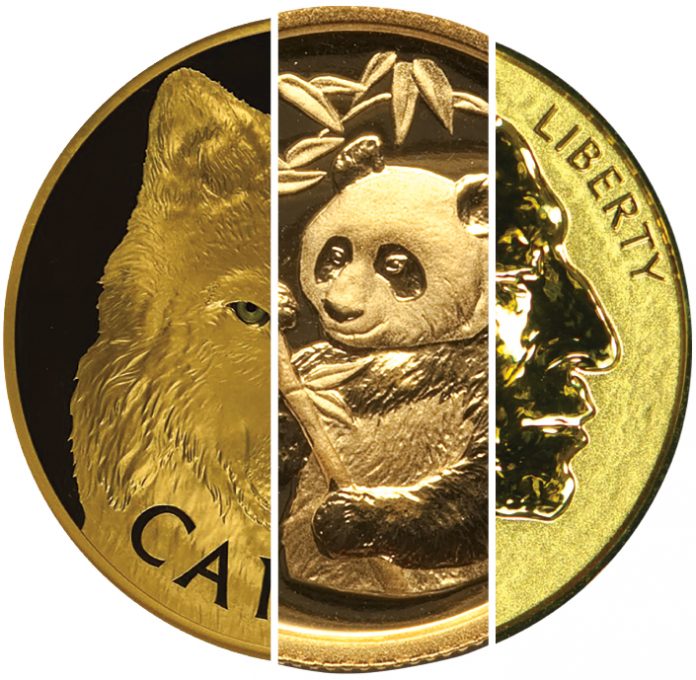
By Scott Schechter
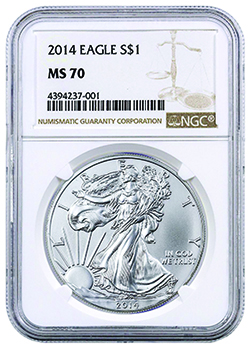
(Photo courtesy Modern Coin Mart.)
Since the numerical grading scale that we use today for U.S. coins was first published in 1949, it has included the “70” grade. This magic number has always represented the highest grade, the best imaginable condition of a particular coin. How and when to apply this grade when describing a coin’s condition, however, has evolved most significantly during the last 20 years. With it, the field of modern numismatics has found rich dimension, fostering a new generation of collectors.
In the early 1980s, numerical grading standards became more rigidly codified and also gained widespread use for all U.S. coin types. Looser terms such as “Gem Uncirculated” became MS-65. “Superb Proof” became PF-67. And sometimes, in auction catalogs of this era, the term “Perfect Uncirculated” or “Perfect Proof” was synonymous, respectively, with MS-70 and PF-70.
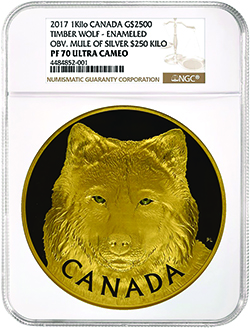
(Photo courtesy Numismatic Guaranty Corporation.)
But at this time, many intermediate grades were only infrequently used. There was no MS-66 grade, only MS-65 aligned with “Gem Uncirculated,” and MS-67, which accorded with “Superb Uncirculated.” Thus, auction houses describing a coin grade that was better than MS-67 somewhat liberally used the term MS-70.
A change was evident by the late 1980s with the introduction of third-party coin grading, performed by professional full-time experts. Not only was a new depth of analysis given to coin grading, but grading companies backed their grades with a guarantee. This meant more precision and more accuracy. A full 11 numerical grades were allowed for uncirculated coins and unimpaired proof coins. Every whole number from 60 to 70 was used. What once might have been called “Perfect Proof” (PF-70) could now be a PF-68 or PF-69 because of these newly introduced grades.
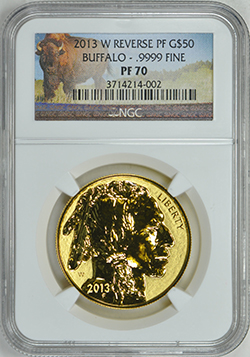
(Photo courtesy GreatCollections.)
In 1987, when Numismatic Guaranty Corporation (NGC) was established, grading services were especially heavily scrutinized based on how well they graded exceptionally high-quality coins. Premiums for classic coinage grading MS-65 and higher were greater than they had ever been. The grades MS-70 and PF-70 ceased to be used. For classic coinage, the market fully valued coins graded 67, 68 and 69, making the application of such grades unnecessary.
As an illustration, one leading wholesale dealer price guide in its January 5, 1979, issue reported the price of an 1880-S Morgan dollar, a common issue, at $15 in MS-60 and $19.50 in MS-65 grade. Only those two uncirculated grades were reported. Ten years later, in its January 6, 1989, issue, that same price guide showed a value of $24 for an MS-60 grade example and $355 in MS-65. Values for MS-63 and MS-64 were also reported. Two years later, in the January 4, 1991, issue, values for MS-67 had been added. For that high grade, the price reported was $1,300! The coin market had gone wild for quality.
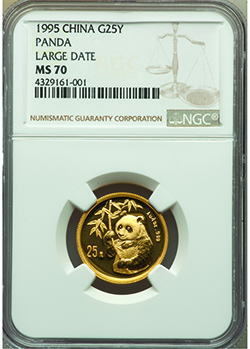
(Photo courtesy Heritage Auctions.)
At the same time, values of modern coins grading MS-67 or PF-67 and higher were not yet widely differentiated, similar to the value difference reported for common issue Morgan dollars in 1979.
The change was the modern coin’s gestalt moment: the State Quarters program launch in 1999. For the first time in decades, people across the nation were interested in circulating coinage, building sets of different designs from pocket change. Millions of people in the United States were paying attention to modern coins. Some of these people became serious collectors. This demand and interest prompted NGC to offer grading services for modern coins.
At first, no coins graded 70. The handling procedures employed at the U.S. Mint simply didn’t often result in defect-free coinage. Packaging used for 1999 Proof Sets, changed in 2000, was blamed for allowing coins to haze or spot quickly, and circulating quarters were often discolored.
In 1999, NGC graders discussed whether 70 was a theoretical grade, an ideal that was used to define the grading standard, but not truly obtainable. But there was historical precedent for MS-70 and PF-70 dating back to the establishment of the coin grading scale. It had been applied to coins. It was a real grade.
Instead, NGC sought to create a clearly articulated definition for the 70 grade that, while strict and precise, could reasonably be assigned to a coin. It is as follows: “A 70-grade coin has no post-production imperfections at 5x magnification.”
The big moment came auspiciously on Leap Day, a day itself that comes but once every four years. On February 29, 2000, NGC graders assigned the PF-70 Ultra Cameo grade to a silver 1999-S New Jersey Quarter. The coin was passed among all present in the grading room, and all unanimously agreed. The coin was a 70!
So momentous was the occasion that NGC issued a press release announcing that a 70-grade coin had been certified and reiterated NGC’s grading criteria. An NGC grader commented in the release: “NGC has graded thousands of coins since its announcement of a 70 grading criteria, but the caution and care with which we will designate this grade has made it difficult to find a qualifying coin. Many of these proof Statehood quarters come nearly perfect, but this New Jersey example was a unanimous winner with our grading team.”
Sign Up for the FREE COINage Weekly Update!
Stay in the know. Get the latest news and information from COINage delivered
weekly – right to your inbox!
From this first coin, an entire industry has developed. Buoyed by online collecting tools and resources, tens of thousands of collectors are building collections of modern coins. For some, only 70-grade coins will do.
Dealers have met this demand by acquiring large numbers of new issues from mints and having them sent directly to NGC. Shortly after new coins are released, they are also available certified in 70-grade if they qualify.
This presented a new and interesting problem for mints around the world. Only since around 2006 could the U.S. Mint consistently produce coins that routinely graded 70, but this includes only their numismatic issues made expressly for collectors. Circulation issues and bullion issues, which don’t receive the special attention, still experience quality issues like spotting and contact marks.
The recent interest in reverse proof finish coinage also has led to another complication. The highest part of the design is mirrored instead of being frosted. These surfaces are delicate and show even the most insignificant abrasion. Certain reverse proof coins don’t grade PF-70 with the same frequency that traditional, brilliant proofs do.
Mints around the world (notably those that made higher quantities of reverse proof coinage) were getting feedback from their large customers that their coins had quality issues. Specifically, they were told, their coins “aren’t grading 70.”
Since 2010, NGC has been contacted by mints around the world asking us two simple questions: “What is a 70? How can we get more of them?”
David Camire, who was among the graders of that first NGC PF-70 coin, now heads NGC’s modern world coin grading department and is an expert in modern minting technology. He has traveled to mints in North America, Europe, Asia, and Africa as a consultant, instructing them in handling methods that will improve their quality – processes that will increase the number of 70-grade coins they produce.
We have also invited mint officials and technical experts to NGC to sit in our grading room and learn about how we assign grades. The method of searching for MS-70 and PF-70 coins hasn’t changed since this era of coin grading began in the 1980s, and NGC graded its first PF-70 in 2000.
Grading begins with controlled lighting. Graders work in a room with very low ambient light. Each grader uses a single desk lamp as his or her light source. Graders at NGC are fanatical about light and will use the same bulb type every day in order to be as consistent as possible. Some maintain their own supply of bulbs and travel with bulbs when they are grading off-site. While there is variation owed to individual preference, graders use a 75W to 100W incandescent bulb, or LED equivalent of 1,100 to 1,600 lumens. Some prefer white light, while others see best in full spectrum, 2,700K to 3,000K.
As a first step, every collector should learn to grade by looking at coins under lighting conditions as consistent as possible each and every time he or she looks at coins.
Next, graders hold their coins the same way, rotating them under the light, making sure to capture and examine every part of the obverse and reverse of every coin in a fluid motion. It’s important to roll a coin under the light at steep angles so hairlines and imperfections catch the light. Blemishes on modern coins are usually directional, which means they are visible when the coin is held at one angle and then disappear completely at another.
Then the grader will examine the coin with a 5x magnifier, paying careful attention to any areas on that coin type that are known to harbor blemishes that are more difficult to see. Graders will rotate the coin in one hand while holding the magnifier in the other, a deft skill perfected over time.
Detected fine hairline scratches, marks, spots, or haze will exclude a coin from grading 70. Today, many of NGC’s modern coin graders have a decade or more experience grading modern coins, and have developed great visual acuity and dexterity, making it possible for NGC to perform this task at scale.
Within the year ahead, NGC will surpass 10 million American Silver Eagles graded and 2 million Chinese Panda coins. Worldwide growth for modern coinage continues to grow at a furious clip. At its very core is the never-ending search for perfect coins.
Scott Schechter is an NGC grading finalizer and vice president. He is co-author of 100 Greatest U.S. Modern Coins and regularly writes and contributes to articles about coinage and grading.
Want to receive COINage magazine in your mailbox or inbox? Subscribe today!













